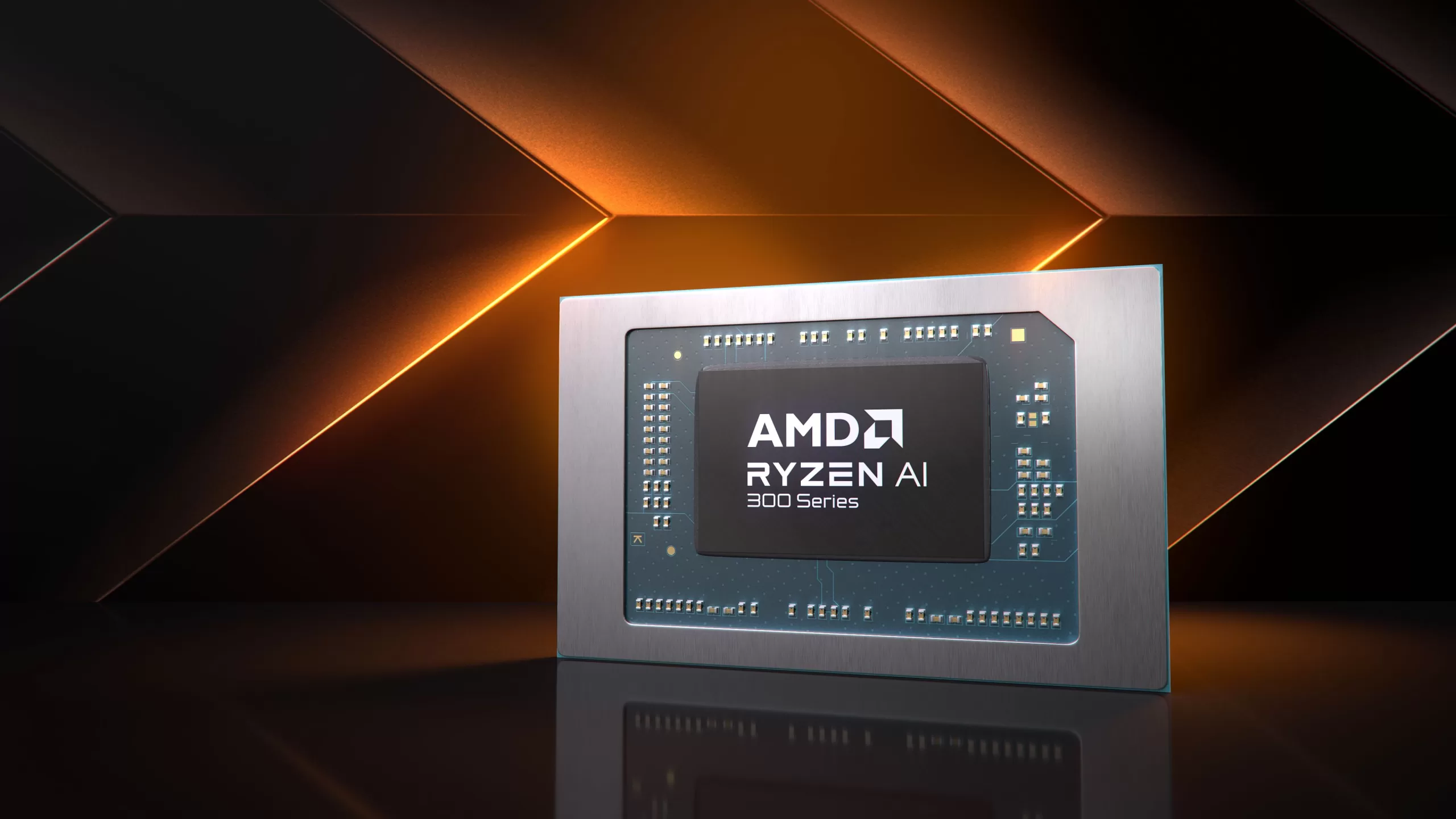AMD‘s Ryzen laptop chips are getting supercharged with AI performance this year. The new laptop SoCs are not just getting powered up, they’ll be getting a new naming convention too. The new “Ryzen AI” chips are focused on bringing the same performance we’re seeing with ARM’s x64-based chips to its own x86-based chipsets. In fact, if AMD’s own claims are to be believed, it would seem that it’s already well on the way to blowing its competition out of the water.
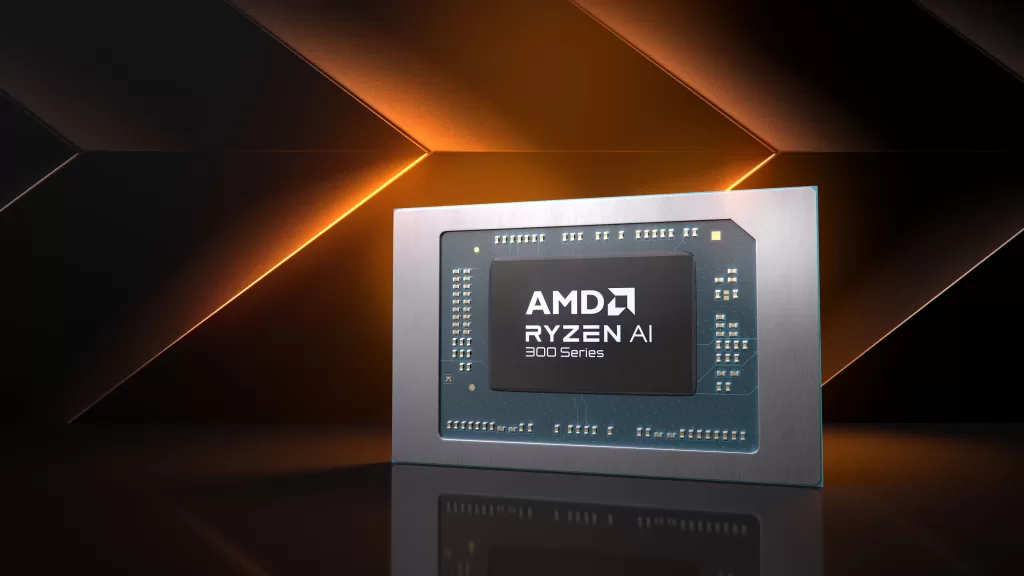
Leveraging Zen 5 with AMD’s XDNA2 Architecture
Ryzen AI processors are the first with the company’s new Zen 5 architecture. The new architecture leverages a 4nm fabrication process that allows it to increase performance and efficiency. The Zen 5 architecture also allows for increased branch prediction and accuracy as well as higher throughputs. The architecture is also designed from the ground up for parallelism.
The main difference between the Ryzen AI 300 series processors and the mainstream Ryzen 9000 is AMD’s own XDNA2 architecture. This architecture complements the performance of the Zen 5 based SoC with a new NPU. This NPU is capable of achieving an AI performance of 50 TOPS. This outperforms Microsoft’s minimum requirement of 40 TOPS for Copilot+ PCs. XDNA2 NPUs also combine the benefits of both 8-bit and 16-bit performance bringing both performance and accuracy to the platform without quantization.
The new Ryzen AI 300 series processors are equipped with 12 high-performance CPU cores with 24 threads and 50% more on-chip L3 cache memory over Zen 4 processors for thin and light laptops. AMD emphasizes that the NPU performance will be crucial to achieving power efficiency on laptops with AI performance. These NPUs can even be leveraged to drive better gaming performance. It’s also worth noting that these Ryzen AI 300 series processors also come with RDNA 3.5 GPUs in the Radeon 800M graphics.
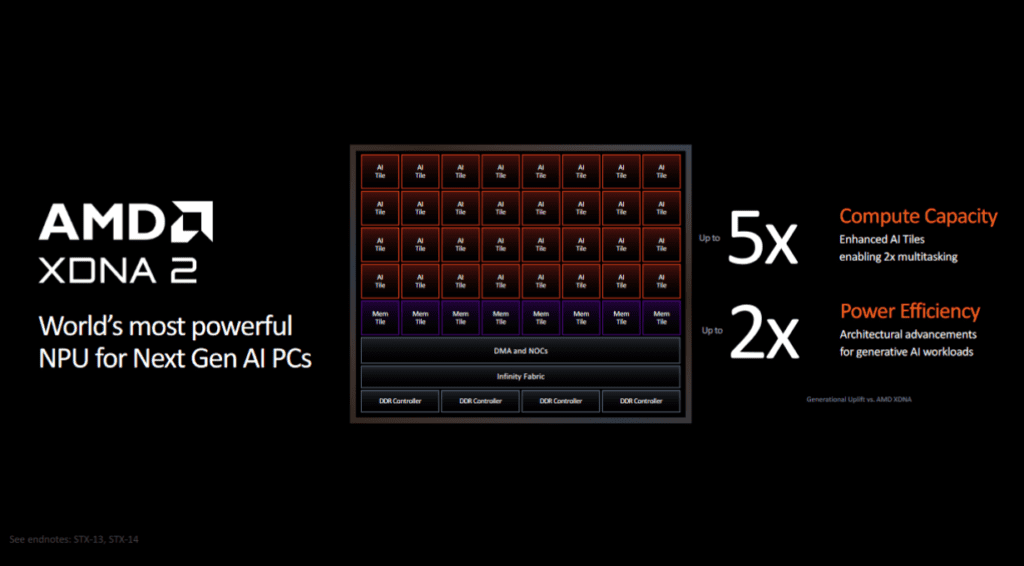
New Naming, Better Value and New Laptops
Together with the new architecture, AMD is also streamlining the nomenclature of its Ryzen AI processors. Ryzen AI processors will now feature the Line (ie. Ryzen AI 9 or Ryzen AI 5) followed by the SKU and then the model. So, a high-performance Ryzen AI 9 processor would be labelled as Ryzen AI 9 HX 370. Where the line is denoted by “Ryzen AI 9”, the “HX” denotes the high-performance SKU and the model is denoted by the “370”. Also notable is the reduction in numbers for the nomenclature from 4 digits to 3.
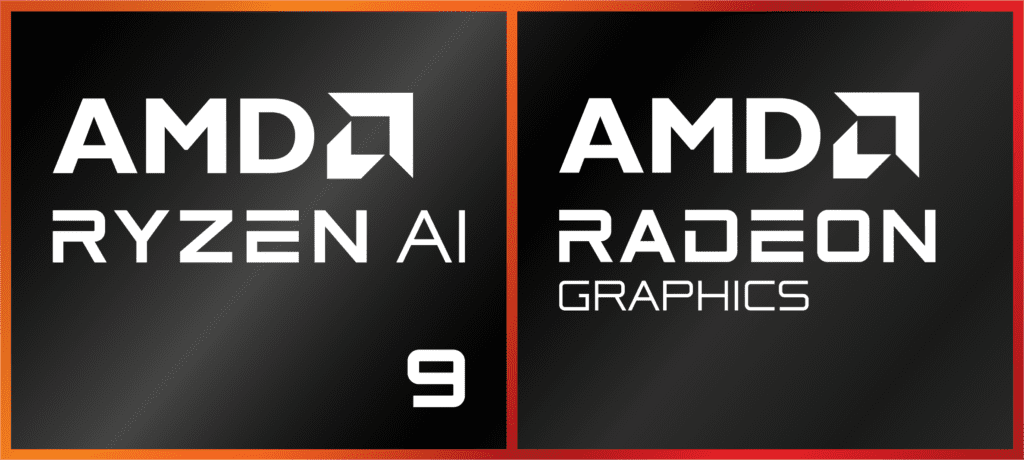
Well, aside from the shiny new name and architecture, the latest AMD Ryzen AI 300 series comes with a whole value set. The processors are undoubtedly part of the AI revolution that is happening when it comes to mobile compute. The AI platform shit will deliver immense value when it comes to performance and power efficiency with laptops. We can expect to see laptops running the Ryzen AI 300 series processors having longer battery life with higher performance thanks to the XDNA2 NPUs that come in the SoC.
We can expect to see laptops with Ryzen AI 300 series processors hit the market in the coming months. Partners like ASUS, MSI, Acer, HP and Lenovo already throwing their backing with laptops in the works. In fact, ASUS has already mentioned a yet-to-be-announced stable of laptops including the ROG Zephyrus G16, ProArt P16 and PX13, Zenbook S 16, ASUS Vivobook S 14, S 15 and S 16, and TUF Gaming A14 and A16. MSI has also already announced the Stealth A16 AI+, Summit A16 AI+, Prestige A16 AI+ and Creator A16 AI+.
SKUs and Availability
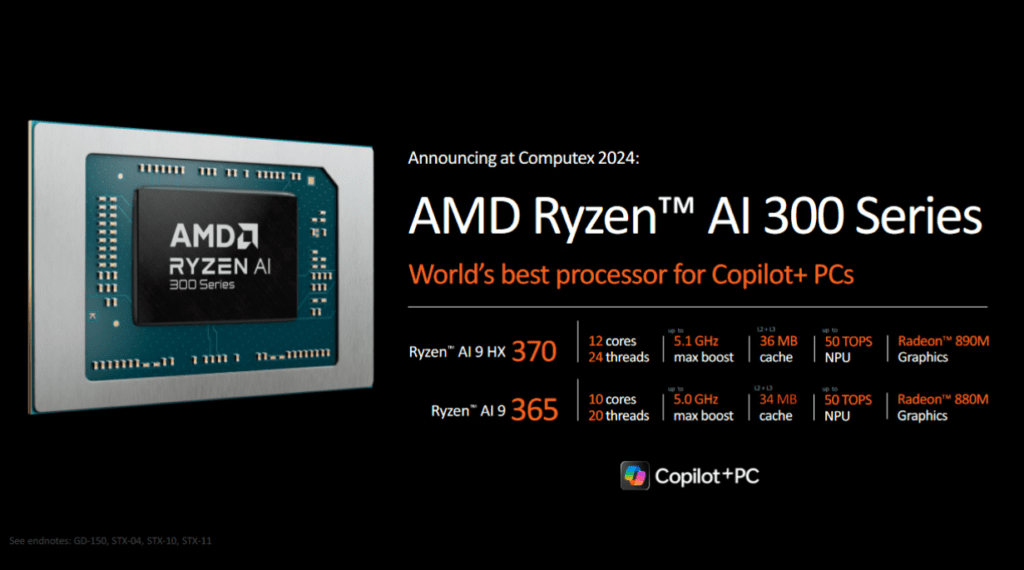
For now, AMD has announced 2 SKUs of the new Ryzen AI 300 series processors. We can expect to see laptops with these processors hit shelves as early as July 2024. SKU Specifications are as follows:
| Model | Cores / Threads | Boost[i] / Base Frequency | Total Cache | Graphics Model | cTDP | NPU |
| AMD Ryzen™ AI 9 HX 370 | 12 / 24 | 5.1 GHz / 2.0 GHz | 36MB | AMD Radeon™ 890M Graphics | 15-54W | Yes (50 TOPs) |
| AMD Ryzen™ AI 9 365 | 10 / 20 | 5.0 GHz / 2.0GHz | 34MB | AMD Radeon™ 880M Graphics | 15-54W | Yes (50 TOPs) |
[i] Max boost for AMD Ryzen processors is the maximum frequency achievable by a single core on the processor running a bursty single-threaded workload. Max boost will vary based on several factors, including, but not limited to: thermal paste; system cooling; motherboard design and BIOS; the latest AMD chipset driver; and the latest OS updates. GD-150



